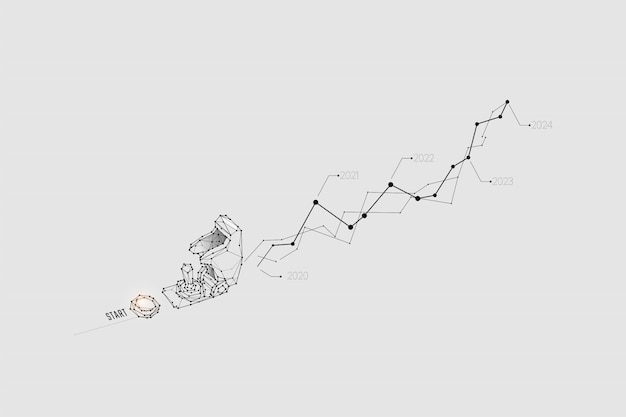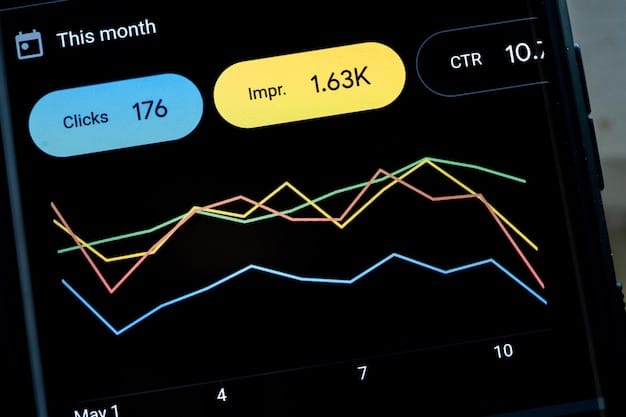The Power of Timeless Reports: Predict Trends 6 Months Ahead

Timeless reports offer a strategic advantage by leveraging historical data and consistent methodologies to forecast trends and uncover opportunities, empowering informed decision-making up to six months in advance.
In today’s fast-paced business environment, staying ahead of the curve is crucial. The Power of Timeless Reports: Predicting Trends and Opportunities 6 Months Ahead enables organizations to anticipate market shifts, optimize strategies, and gain a competitive edge.
Understanding the Essence of Timeless Reports
Timeless reports provide a consistent and reliable framework for analyzing data over extended periods. This approach allows for the identification of recurring patterns and emerging trends that might be missed in short-term analyses.
By focusing on fundamental metrics and employing stable methodologies, these reports minimize the noise and volatility that can obscure underlying market dynamics. This makes them invaluable for long-term strategic planning.
Key Characteristics of Timeless Reports
What defines a truly timeless report? It goes beyond simply being a collection of data points; it’s about creating a resource that remains relevant and insightful over time.
- Consistency: The report consistently uses the same metrics and methodologies, ensuring comparability across different time periods.
- Reliability: The data sources are vetted and trustworthy, minimizing the risk of inaccuracies or biases.
- Relevance: The report focuses on fundamental metrics that are relevant to the business or industry being analyzed.
- Actionability: The report provides insights that can be translated into actionable strategies and decisions.
Timeless reports are not static documents; they are dynamic tools that evolve with the changing landscape while maintaining their core principles. This adaptability ensures their continued value in guiding strategic decision-making.

The Strategic Advantages of Predicting Trends 6 Months Ahead
The ability to accurately forecast trends six months into the future can be a game-changer for businesses. It allows them to proactively adapt to changing market conditions and capitalize on emerging opportunities.
By anticipating future demand, companies can optimize their production schedules, inventory management, and marketing campaigns. This can lead to increased efficiency, reduced costs, and improved profitability.
Enhanced Decision-Making with Foresight
Predicting trends 6 months ahead empowers decision-makers with the foresight they need to make informed choices. This reduces uncertainty and allows for more confident strategic planning.
- Resource Allocation: Allocate resources effectively based on anticipated demand and market trends.
- Investment Decisions: Make smarter investment decisions by identifying promising opportunities early on.
- Risk Management: Proactively mitigate risks by anticipating potential challenges.
With a clear understanding of future market dynamics, organizations can make strategic decisions that are aligned with long-term goals and objectives. This leads to sustainable growth and a stronger competitive position.
In conclusion, gaining insights into future trends is beneficial for strategic planning, resource allocation, and risk management, allowing companies to optimize their processes and increase their profitability.
Building a Framework for Timeless Reports
Creating timeless reports requires a well-defined framework that encompasses data collection, analysis, and presentation. This framework should be designed to ensure consistency, reliability, and relevance.
The initial step is to identify the key metrics and data sources that are most relevant to the business or industry being analyzed. These metrics should be fundamental and indicative of underlying market dynamics.
Essential Components of a Timeless Reporting Framework
A robust framework is essential for creating reports that stand the test of time. Here are some crucial components.
- Data Collection Protocols: Establish clear and consistent protocols for collecting data from various sources.
- Data Validation Procedures: Implement procedures to validate the accuracy and reliability of the data.
- Standardized Analysis Techniques: Employ standardized analysis techniques to ensure comparability across different time periods.
- Clear and Concise Presentation: Present the findings in a clear and concise manner that is easily understood by decision-makers.
By adhering to a well-defined framework, organizations can create timeless reports that provide valuable insights and support informed decision-making. This framework should be regularly reviewed and updated to ensure its continued relevance and effectiveness.

Leveraging Historical Data for Accurate Predictions
Historical data is the foundation upon which timeless reports are built. By analyzing past trends and patterns, organizations can gain valuable insights into future market dynamics.
The key is to identify recurring patterns and correlations that are indicative of underlying market forces. This requires a deep understanding of the business or industry being analyzed.
Techniques for Analyzing Historical Data
There exist several techniques that organizations use to analyze trends and make predictions. A summary of some is listed below.
- Time Series Analysis: Analyze data points collected over a period to identify trends, seasonality, and cycles.
- Regression Analysis: Identify the relationship between different variables to predict future outcomes.
- Machine Learning Algorithms: Employ machine learning algorithms to uncover complex patterns and relationships in historical data.
By combining historical data with statistical analysis and machine learning techniques, organizations can develop accurate predictions about future market trends. This allows them to proactively adapt to changing conditions and capitalize on emerging opportunities. In conclusion, this enables them to make wiser decisions when planning ahead.
Identifying Emerging Opportunities and Mitigating Risks
Timeless reports not only help in forecasting in trends, but also in spotting potential opportunities and tackling risks. Being able to foresee these elements can give companies a strategic edge.
By constantly watching the indicators from their reports, businesses can adjust their strategies to grab new opportunities or reduce possible harm depending on market conditions.
Strategies for Recognizing Chances and Reducing Threats
Companies can become more flexible and robust by developing a system for recognizing potential chances and defending against risks.
- Market Research: Continue researching the market to identify needs and trends that could lead to new goods or services.
- Risk Assessment: Do regular assessments to uncover potential pitfalls and plan for them.
- Innovation Focus: Promote a culture that values exploration and supports fast adaptation to market dynamics.
By using these insights, firms can confidently go through difficulties and take full advantage of emerging trends. This is very important for achieving lasting success and staying robust in a market that is always changing.
Case Studies: Real-World Applications of Timeless Reports
To illustrate the practical value of timeless reports, let’s examine a few case studies where these reports have been successfully implemented.
These case studies demonstrate the versatility and effectiveness of timeless reports in various industries and business contexts. By learning from these examples, organizations can gain valuable insights into how to leverage these reports to achieve their own strategic goals.
Examples of Applications of Timeless Report
How does one put timeless reports into practice? Here are some examples.
- Retail Industry: A retail company used a timeless report to analyze sales data over the past decade. The report revealed a recurring seasonal trend in demand for certain products. The company was then able to optimize its inventory and staffing levels for each season, and ended up raising seasonal season sales by 15%.
- Manufacturing Industry: A manufacturing firm used a timeless report to track production costs and efficiency. The report revealed a correlation between machine maintenance and downtime. As a result, preventative maintenance was able to cut by 20% the downtime from machine failure.
- Financial Services Industry: A financial services company used a timeless report to model investment risk. The data highlighted an increasing correlation between the stock market and interest rates. The company diversified its portfolio, and was able to reduce the portfolio’s vulnerability to market swings.
In summary, using timeless reports allows companies to make wiser decisions. This in turn helps greatly with making their strategic goals.
| Key Point | Brief Description |
|---|---|
| 📈 Trend Prediction | Anticipate market shifts and upcoming opportunities. |
| 🎯 Strategic Planning | Enhance decision-making for long-term goals. |
| ⚙️ Resource Allocation | Optimize resources based on predicted market demand. |
| 🛡️ Risk Mitigation | Proactively address potential challenges and threats. |
Frequently Asked Questions
▼
They provide a reliable basis for predicting trends, better decision-making, and enhanced strategic planning, enabling companies to move proactively.
▼
Accuracy depends on quality of data and robust analytical methods. Historical data, careful validation and suitable analyses increases reliability.
▼
Yes, they may be used across many sectors, but may need customization. Using key performance measures makes assessment effective.
▼
The updating schedule depends on industry movement and business goals. Regularly reviewing data helps to sustain accuracy and relevance.
▼
You require key metrics, well-established analysis methodologies, and reliable data sources. Focus on reliability and clarity.
Conclusion
The Power of Timeless Reports: Predicting Trends and Opportunities 6 Months Ahead is a pivotal strategy for any forward-thinking organization. If integrated properly, timeless reports not only inform but revolutionize strategic planning, resource allocation, and innovation, positioning businesses for sustained success.





